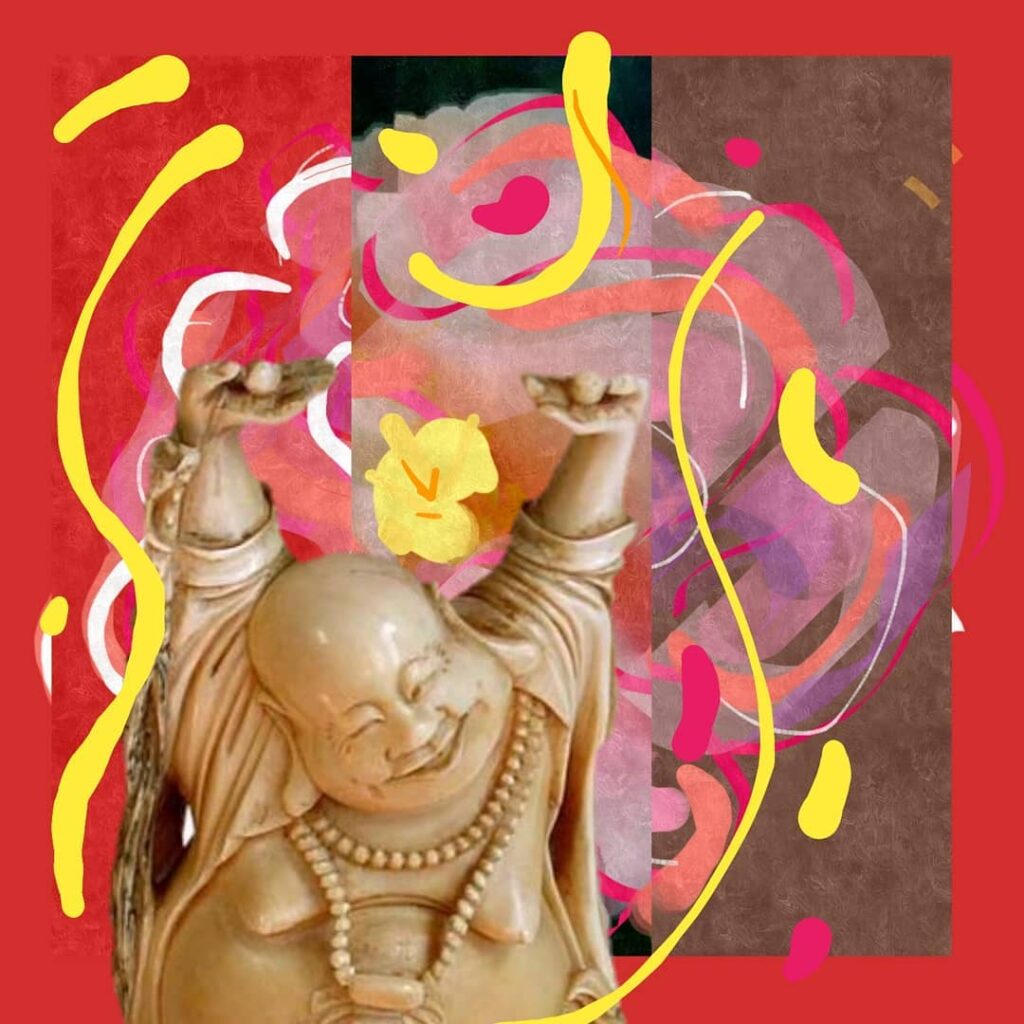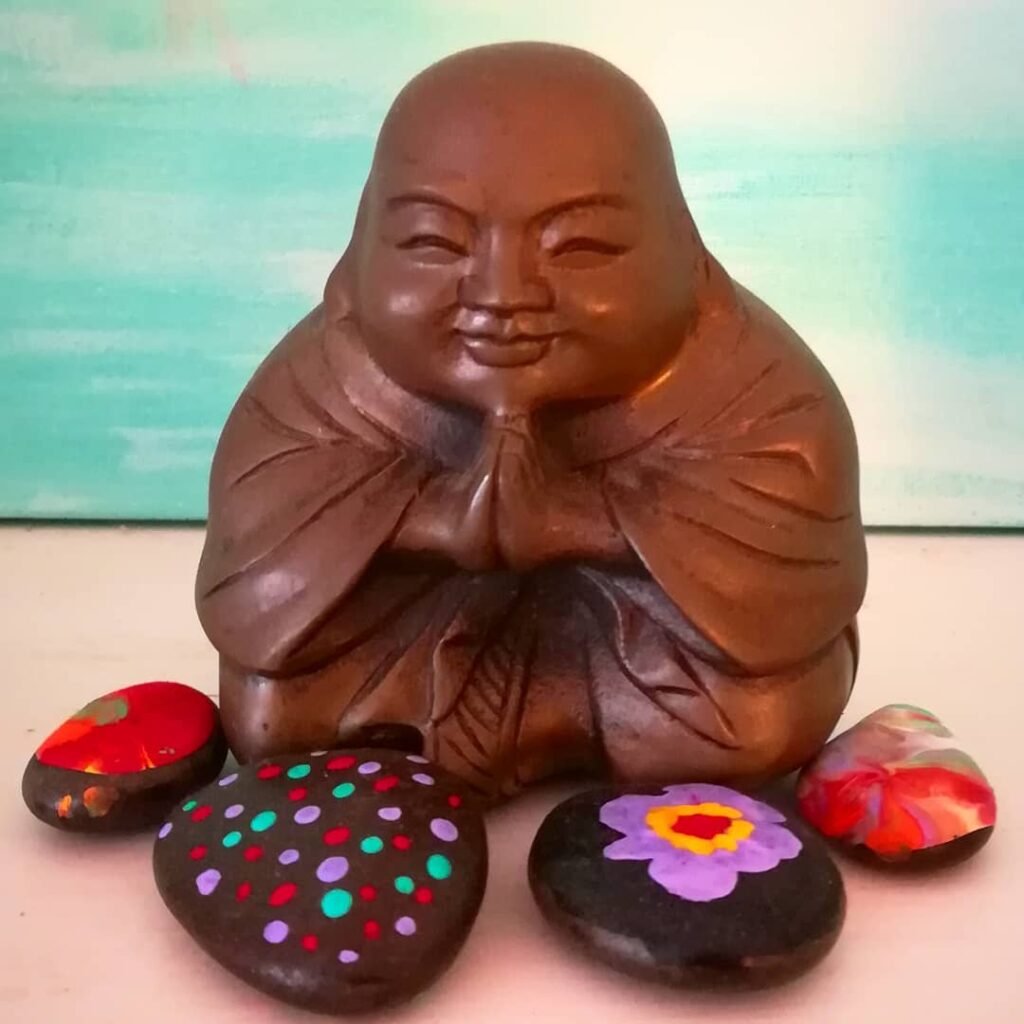In the last two posts, we explored the nature of suffering (https://spiritualsushi.com/making-sense-of-suffering-part-1/) and how to transform it (https://spiritualsushi.com/attend-befriend-part-2-engaging-transforming-suffering/). This third post in the series is about building the inner capacity to make this shift. There is a story of the Laughing Buddha that helped me see this pattern.

The Laughing Buddha was a jolly monk who lived in the 10th century in China. He’s often pictured with a big belly and a giant sack. The sack was key to his work. He wandered around town carrying the sack with things in there to give away to people he encountered — money for someone in need, a bit of food for people who were hungry, toys for children, and a smile for everyone. When he encountered people with means, he asked for something to add to his sack.
The Laughing Buddha was recognized by the people around him as compassionate and in touch with a deeper source of being. One day, an admirer asked him what is the essence of the Tao. The Laughing Buddha smiled, put down his sack, and settled into a seated meditation. The observer was puzzled and then asked his question again, reframing it, what is the expression of the Tao. The Laughing Buddha opened his eyes, laughed, grabbed his sack, and went on his way to continue his work.
This story was a revelation to me. Through this illustration, the Laughing Buddha expressed where he found inspiration for his compassionate actions — the space within — and how he expressed this inspiration — with his work in the world. I have found this pattern in the lives and actions of many great souls who spent much time in meditation and solitude as an enabler of their efforts. But why does this work?

Meditation is about turning within, to silence, to the space of emptiness. One of the things that happen here in this infinite space of emptiness is the ability to connect with the oneness of all things. As we’ll explore in a future post, form (physical or mental) is bounded while emptiness is boundless. God, in many traditions, is understood to be formless, boundless, infinite. In dropping boundaries, it is possible to feel the divine and a deeper sense of unity and connection. This state of being can’t really be expressed in words, but it can be experienced.
Another aspect of meditation or prayer is about becoming more centered and rooted in how we respond to the outer world. Gandhi once said I have a busy day today so I need to meditate an hour extra. What he indicated was that this inner work was needed for him to show up as present, calm, and intentional regardless of the external turmoil. This is often the reverse of what we may tend to fall into when there is greater stress and demands. I tend to tip into trying to do more, working harder to milk more output from time. But, of course, under duress, we’re often not equipped to do — or be — our best.

The Dalai Lama indicated that while meditation was not about thinking, it was not akin to sleep. It is, he explained, about being able to see more clearly. Our minds are busy, cluttered with a flurry of thoughts and emotions, especially under stress. We can’t see or think clearly unless we can let this noise settle. Part of seeing, is turning our sights to what’s within us and becoming aware of our own thinking, emotions, and behaviors.
To practice Attend and Befriend (https://spiritualsushi.com/attend-befriend-part-2-engaging-transforming-suffering/), we need to catch ourselves in the throes of unconscious and uncontrolled reactivity (https://spiritualsushi.com/making-sense-of-suffering-part-1/) and move our response to conscious choice. It is not easy to do in the moment unless we are predisposed to doing so — roots after all take time to set. This is where steady spiritual practice comes in.
In the end, spiritual practice serves not to help us escape the world, but to live more intentionally in it. What do you think?

Hi Lyndon,
Somehow I missed this post in LinkedIn, having read #1, #2, and today #4 of the series. OMG…you write so clearly and poetically.
I love this – “Our minds are busy, cluttered with a flurry of thoughts and emotions, especially under stress. We can’t see or think clearly unless we can let this noise settle. Part of seeing, is turning our sights to what’s within us and becoming aware of our own thinking, emotions, and behaviors.” – and need to remind myself over and over again of the truth these words speak in order to practice more consciously.
I too see this connection so clearly, and yet it is hard to be disciplined about practice. I think that is where hardship comes in. It shakes things up such that we’re forced to change. Thanks for the kind words on the writing too, BTW!